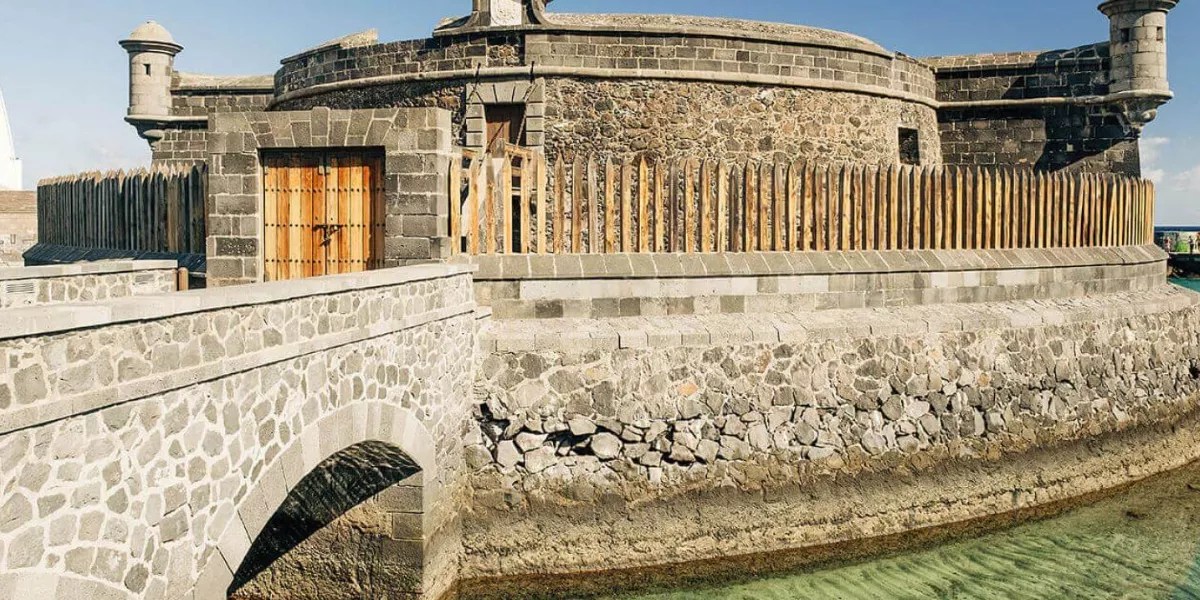The City Council of Santa Cruz de Tenerife, through the Councilor for Public Services, Carlos Tarife, has requested the Superior Court of Justice of the Canary Islands (TSJC) and the Government Subdelegation for authorization to install fixed video surveillance cameras in the García Sanabria Park of the capital, which provide service 365 days a year and contribute to “scaring away” those who are dedicating themselves to abandoning or releasing certain exotic species in the ponds or carrying out acts of vandalism in the Flower Clock, located in this green space of the city. .
In two letters, sent last Monday to the subdelegate of the Government in the province of Tenerife, Jesús Javier Plata, and to the president of the TSJC, Antonio Doreste, to which DIARIO DE AVISOS has had access, the mayor explained that “for some time we have been having problems in García Sanabria Park at two specific points. One in the areas related to the ponds, where animals are released indiscriminately, affecting the flora and fauna of the park itself, and another in the Flower Clock, where we quite frequently encounter the unfortunate event of having “We have to fix the blades of this infrastructure due to uncivil behavior.”
Tarife justified the request for authorization of cameras in the pond area, as DIARIO DE AVISOS already announced on December 7, 2023, based on the recent report from the Neotropic Foundation – manager of the only Exotic Fauna Recovery Center that exists in the Canary Islands. , located in Barranco Grande-, where its president, Jaime de Urioste, considered “it is essential to take urgent control and surveillance measures to prevent the release of exotic species in the Park.”
Regarding video surveillance in the Flower Clock, the mayor pointed out that the objective is to “protect this heritage in a BIC environment such as the Park”, remembering that it was transferred to the city in 1958 by the Danish consul, Peder Larsen, for leave the stamp of one of your favorite places on your stay in Santa Cruz.
He added that “we need both authorizations to be operational 365 days a year to prevent behaviors that are dangerous and generate numerous expenses for the City Council.” In addition, Tarife stated that the cost of these cameras will be covered by the City Council.
Diseases
Regarding the invasive exotic species in the García Sanabria, the Neotropic Foundation report recalls that in recent years specimens abandoned by their owners have appeared, such as green iguanas (Iguana iguana), Kramer’s parrots (Psittacula krameri) and aquatic turtles ( Trachemys scripta) or potentially dangerous animals such as piranhas.
In 2023, the report details, “the practice of abandoning exotic species in the Park has suffered a threatening growth, after worrying species such as the marbled crayfish (Procambarus fallax forma virginalis) and the giant African snail (Lissachatina fulica) were found. which causes alarm due to its high risk of transmitting diseases to humans, since they can carry bacteria such as Salmonella or dangerous parasites that cause meningoencephalitis; encephalitis; cauda equina syndrome or ocular angiostrongyliasis.
Specific signage and 26 license plate reading cameras for the ZBE
Last Monday, the Governing Board of the Santa Cruz de Tenerife City Council approved the initial project for the implementation of the Low Emissions Zone (ZBE) in the urban center, whose purpose is to mitigate problems related to traffic pollution. The proposal, drawn up by UTE Tema-Wawa ZBE, for an amount of 71,761.46 euros, defines the actions necessary to carry out the progressive implementation of this restricted and sustainable space, highlighting the installation of 26 license plate reading cameras that will identify the environmental label of vehicles.
The ZBE will regulate access, circulation and parking, integrating residents, underground parking and delivery vehicles into its management, while for the rest, total access control will be implemented (39), the reorganization of public space, especially the linked to parking areas, the expansion of pedestrian areas and lanes for personal mobility.
Perimeter
In this sense, OCR cameras will be placed to read license plates on the perimeter of the ZBE, at all entrances and exits, which will be responsible for controlling the vehicles entering and leaving for the subsequent application of sanctions. Likewise, video surveillance cameras will be installed for the areas of influence of the ZBE, approaching traffic and their movements.
Inside the ZBE there will be a total of 11 spaces reserved for loading and unloading and 41 public spaces for vehicles of people with reduced mobility, also controlled by cameras, as these users will be able to access regardless of their environmental label. The occupancy of the spaces will be monitored to verify that the vehicles that enter are using them and the occupancy will be reported so that drivers can decide whether or not to enter the ZBE. Likewise, parking will be regulated with blue and green charging zones, and the entire access control system to the area delimited by the Urban Plan will be homogenized, moving from the current semi-automatic bollards to control through cameras.
Regarding the signage, it will be fixed, both vertical and horizontal, and in total eight pre-signaling signs will be installed that will warn vehicles in advance that they are in an environment close to the low emissions zone, as well as the end of zone restrictions limited to 30 km/h or regulated parking. Horizontal signage will be used to delimit the accesses to the ZBE with a double parallel line on the sidewalk.
The approved document can be consulted on the website (www.santacruzdetenerife.es) for 30 days from its publication in the Official Gazette of the Province. In 2022, the municipality registered 173,421 vehicles, of which 118,452 were passenger cars, a figure that has increased by almost 4% in the last decade.















